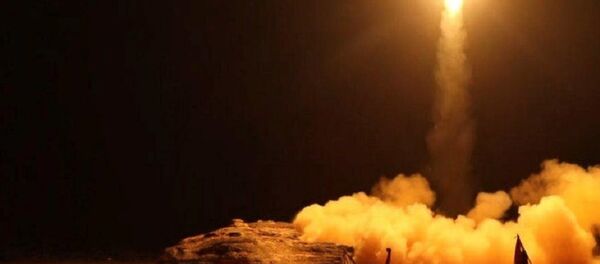According to a source cited by Press TV, Yemeni army forces have claimed a successful hit by a domestic-made Qaher M-2 (Subduer M-2) ballistic missile on a Saudi Arabia military base located near the southernmost city of Jizan.
At the same time, the Saudis reported that one missile was intercepted over a border city of Najran.
"The missile was fired at Najran indiscriminately and with the aim of hitting residential areas," coalition spokesman Colonel Turki al-Malki declared to the official Saudi Press Agency.
"It was successfully intercepted and the debris fell on residential areas, lightly wounding one Indian expatriate," he added.
Earlier on March 26, Saudi Arabia claimed to have intercepted another strike which included seven ballistic missiles. Riyadh claimed all seven missiles — this time, the Burqan 2H variety — were successfully intercepted. A CNN video shows the launch of Patriot anti-missile missiles by Saudi forces. However, several other videos uploaded Sunday show at least one counter-missile failed in midair and hit the ground, exploding in a Riyadh neighborhood.
The exact extent of damage following the misfire is unknown.
Revealed in 2017, the Qaher M-2 medium range ballistic missile is an upgraded version of Qaher 1, a ballistic missile created by Yemeni forces by modifying old Soviet S-75 surface-to-air (SAM) missiles. A Qaher-M2 reportedly weighs some 350 kg and has a range of 400 km, according to SouthFront.org.
The Burqan-2H ‘Volcano' is a short-range ballistic missile, believed to have been developed by Yemeni forces and based on the Iranian-built Qiam-1 or Shahab-2 missile, both of which are in turn based on the North Korean Hwasong 6, itself a derivative of the 1958-era Soviet R-17 Elbrus missile.



